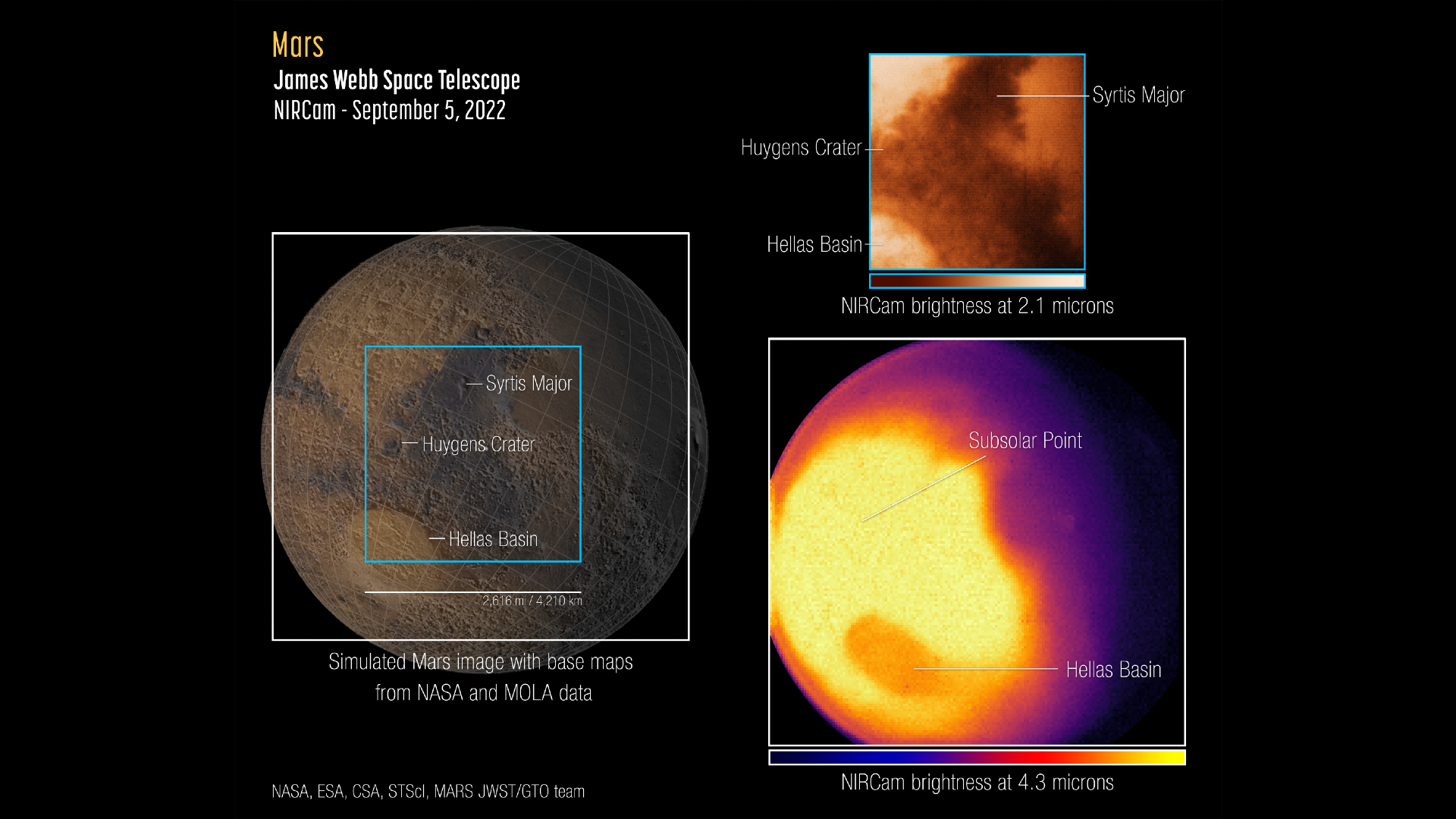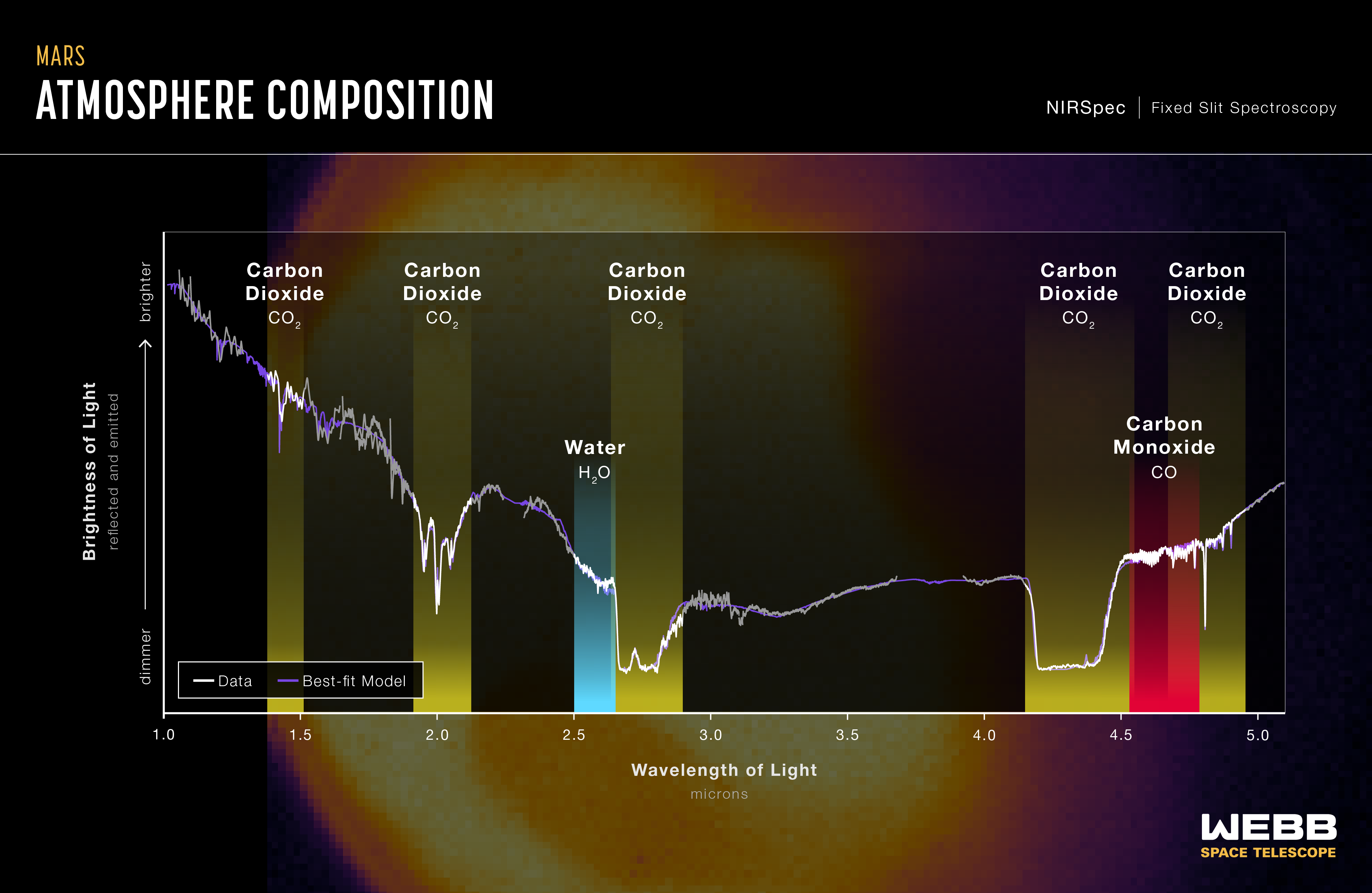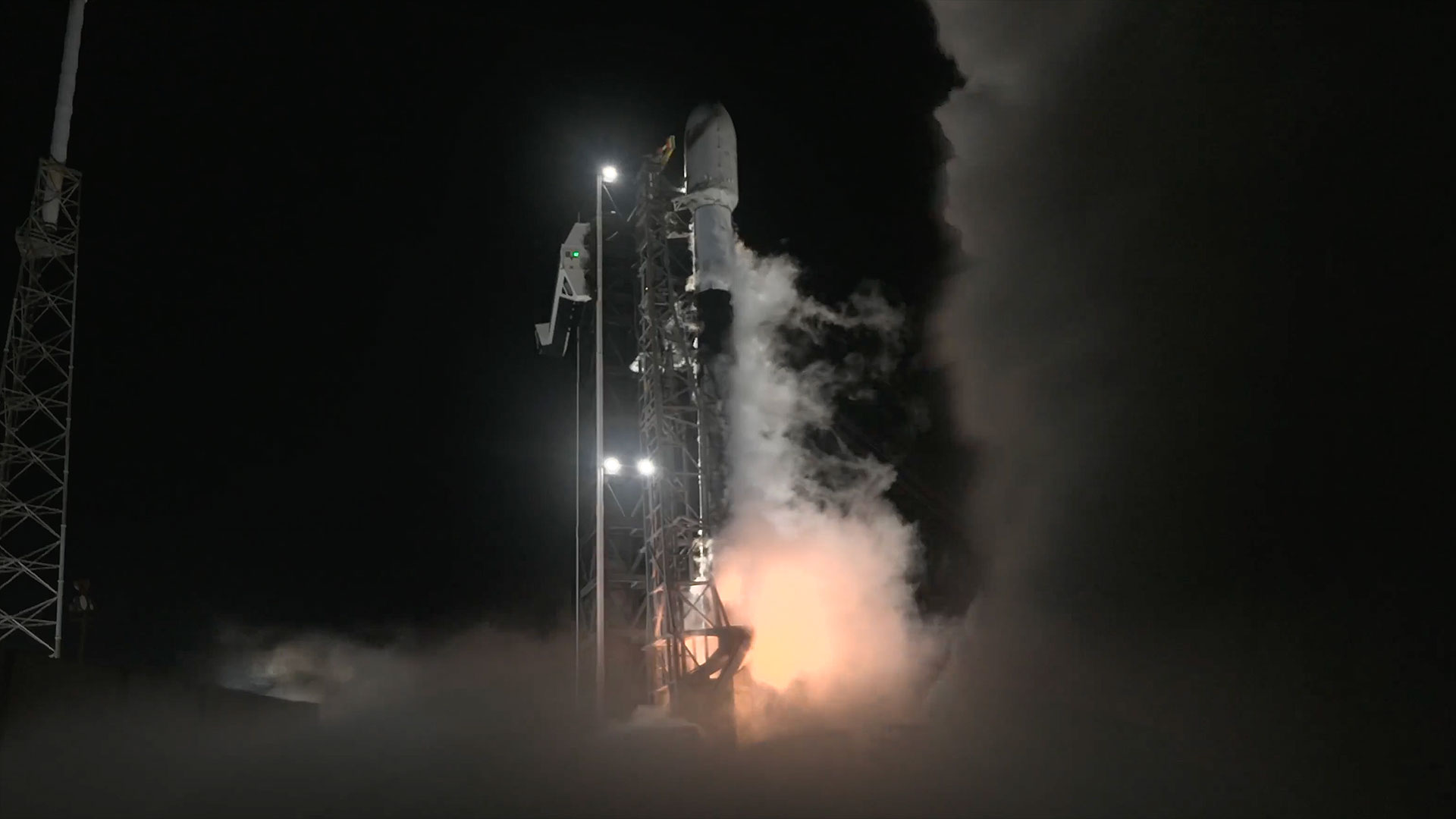James Webb Space Telescope's 1st images of Mars reveal atmosphere secrets
Infrared images of Mars captured by the space telescope show its surface features and hint at its chemistry.

The James Webb Space Telescope (JWST) has captured its first images of Mars, viewing infrared light coming from the Red Planet with high sensitivity.
The James Webb Space Telescope's first images and spectra of Mars were released on Monday (Sept. 19) at the Europlanet Science Congress (EPSC) 2022. The images and measurements were made on Sept. 5, 2022 from JWST's position around a million miles (1.6 million kilometers) from Mars.
The images of Mars' observable disk — the side of the planet lit by the sun and facing the telescope — were captured by Webb's Near-Infrared Camera (NIRCam) and could provide planetary scientists with a unique view of Earth's close neighbor, delivering data that can be used in conjunction with observations made by rovers like NASA's Perseverance and craft in the Martian orbit.
Related: James Webb Space Telescope snags its 1st direct photo of an alien world
Because Mars is relatively close and is very bright, it isn't the easiest object for the JWST — designed to see incredibly distant and faint objects — to visualize.
"Mars is so bright, that the challenge is how to see it," NASA Planetary Systems Laboratory at Goddard Space Flight Center scientist and lead investigator Giuliano Liuzzi said in an EPSC press conference to mark the release of the images.
To prevent the bright infrared light from Mars from blinding the JWST's instruments, scientists used very short exposures to observe the Red Planet. This meant measuring only some of the light that reached JWST's detectors and then applying special methods to analyze the collected data.
Breaking space news, the latest updates on rocket launches, skywatching events and more!
"We can see this incredible resolution, we have the diffraction limit of a space telescope in the infrared, which is fantastic. We can see the whole planet," Liuzzi continued.
Observing Mars around the clock
The JWST was able to capture images and spectra with the spatial resolution that astronomers need to study short-term phenomena like Martian weather patterns, dust storms, and even changes caused by the planet's seasons.
Additionally, the Webb telescope could capture events that happen at different times throughout the Martian day — during the daytime, at sunset and during the night — in a single observation.
The first images of Mars taken by the JWST show an area in the eastern hemisphere of the planet in two different wavelengths of light.
The short wavelength image is dominated by reflected sunlight and shows details of the Martian surface that resemble features seen in visible light. These features include the Huygens Crater, a near 280-mile-wide (450 kilometers) impact crater, and dark volcanic rock in the Syrtis Major Planum.
The Webb space telescope's NIRCam camera caught the light that Mars emits at longer wavelengths of infrared as it loses heat. The brightness of this light is related to the temperature of Mars and its atmosphere, with the brightest and warmest area located where the sun is almost overhead the planet.
The brightness diminishes towards the Martian polar regions that are exposed to less sunlight, and in the northern hemisphere of the planet which is currently in the midst of Martian winter.
The amount of light reaching the JWST isn't only related to the planet's temperature, however. The images collected by the telescope can also give hints at the chemical composition of the Martian atmosphere and surface.
Atmospheric clues at the Hella Basin
Analyzing the spectrum of light detected coming from Mars with data collected by the James Webb Space Telescope could help astronomers determine the composition of its atmosphere and its surface.
After analyzing the JWST images, Liuzzi and his team found that the 1,200-mile-wide (1,930 km) Hellas Basin appears darker than its surroundings, even at the hottest time of the Martian day in that region.
"One of the neat things is you can see a dark patch that is a basin on Mars. We weren't expecting that. We were seeing something very bright, but it got darker," Liuzzi said. "This is actually not a thermal effect at Hellas."
The darkening seen at this well-preserved impact structure is the result of light passing through the Martian atmosphere and being absorbed by carbon dioxide.
"The Hellas Basin is a lower altitude, and thus experiences higher air pressure," the Goddard researcher explains. "That higher pressure leads to a suppression of the thermal emission at this particular wavelength range due to an effect called pressure broadening. It will be very interesting to tease apart these competing effects in these data."
The new images also demonstrate the ability of the James Webb Space Telescope to study Mars using a technique called spectroscopy on measurements taken with the telescope's Near-Infrared Spectrograph (NIRSpec) instrument.

Because chemical elements absorb and emit light at very specific wavelengths, planetary scientists can use spectroscopy to study the 'fingerprints' that different chemicals leave in the light passing through a planet's atmosphere to determine its composition.
Initial results obtained by the scientists show spectral features encoded with information about Martian dust, icy clouds, the composition of the atmosphere, and the type of rocks found at the planet's surface.
Observations from the JWST should be able to identify the presence of water, carbon dioxide, carbon monoxide and other chemical compounds.
Liuzzi pointed to the debate regarding the presence of methane on Mars, with initial ground-based observations and rovers providing evidence of this compound, albeit sporadically. While the ExoMars Trace Gas Orbiter (TGO) measurements, haven't been able to confirm this, and observations from Earth are complicated by methane in our planet's atmosphere, Liuzzi believes that JWST observations could be the difference maker.
"The big conundrum has been that the rovers on the surface and the observational data have left a gap between zero and 10 kilometers [6 miles]," he said. "Now we have James Webb, we can see the full column [of the atmosphere] all the way to the surface where the rover is. So we've provided a new way to solve this conundrum."
Methane is important, Liuzzi added because it can tell planetary scientists a lot of geological processes on Mars, including if something large has struck the Red Planet from space recently. Methane could also hint at biological activity in the planet's ancient history.
"That's what our main target is right now," Liuzzi said.
The JWST team is currently producing a paper presenting its findings for peer review.
Follow us on Twitter @Spacedotcom or on Facebook.
Join our Space Forums to keep talking space on the latest missions, night sky and more! And if you have a news tip, correction or comment, let us know at: community@space.com.

Robert Lea is a science journalist in the U.K. whose articles have been published in Physics World, New Scientist, Astronomy Magazine, All About Space, Newsweek and ZME Science. He also writes about science communication for Elsevier and the European Journal of Physics. Rob holds a bachelor of science degree in physics and astronomy from the U.K.’s Open University. Follow him on Twitter @sciencef1rst.
